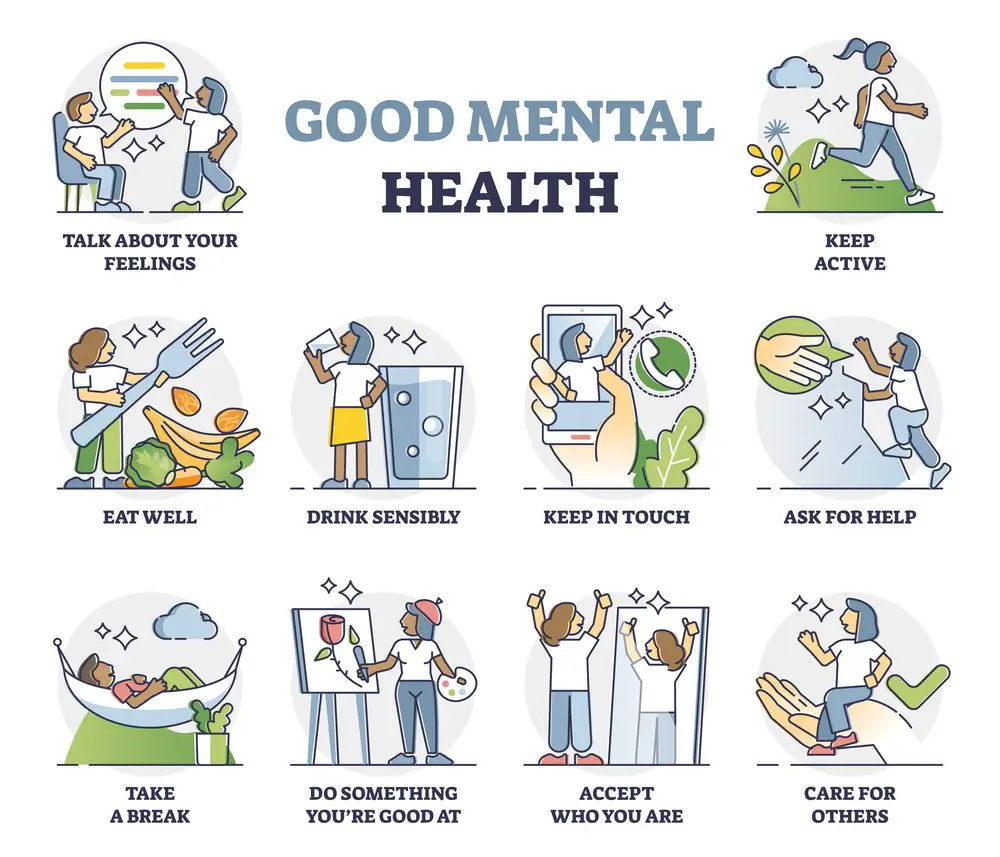As a BetterHelp affiliate, we receive compensation from BetterHelp if you purchase products or services through the links provided
Dream therapy has recently gained attention as a unique and effective approach to understanding our subconscious mind and deciphering the hidden messages in our dreams. Dreams have always fascinated us as they give us a peek into our psyche, emotions, and desires. Dream therapy aims to unveil hidden issues and concerns affecting our daily lives by tapping into our dream state.
Dream therapy is rooted in the idea that dreams have a purpose and are essential tools for self-exploration, communication with the subconscious, and personal growth. The analysis and interpretation of dreams within the context of therapy enable individuals to gain insights into their emotions, cope with unresolved conflicts, and boost overall mental health.
Key Takeaways
- Dream therapy can help uncover hidden issues affecting our daily lives.
- It views dreams as essential tools for self-exploration and personal growth.
- Analyzing dreams in therapy can provide insights into emotions and mental health.

The Science of Dream Therapy
Dream therapy has become a popular approach to improving mental health. To understand the science behind it, let’s delve into the connection between dreams, the science of sleep, and neuroscience.
When you sleep, your brain goes through different stages, including REM (rapid eye movement) sleep. This is the stage where dreaming primarily occurs. Neuroscience has found that during REM sleep, your brain actively processes emotions and memories, making it essential to maintain your psychological well-being.
Dream therapy focuses on the interpretation and understanding of your dreams. You can uncover valuable insights into your subconscious mind by analyzing your dream’s content, symbols, and themes. These insights can help you address emotional conflicts, resolve past traumas, and enhance self-awareness.
Mental health professionals who practice dream therapy use several techniques to guide you through this process:
- Active Imagination: Encouraging you to engage with the dream creatively and explore its meaning.
- Associative Techniques: Asking you to consider the connections between dream elements, emotions, and waking life.
- Amplification: Examine symbols’ cultural, historical, and personal significance in your dream to understand its message better.
You can better understand your emotions, thoughts, and inner desires by learning to interpret and make sense of your dreams. This newfound self-awareness can help you tackle personal challenges, improve relationships, and promote overall mental health.
Remember, as you explore dream therapy, it’s essential to keep an open mind and embrace the friendly guidance of a trained professional. Combine it with good sleep habits to maximize its potential benefits.

The Role of Dreams
Dreams play a significant role in our lives, often providing a unique window into our unconscious and subconscious minds. Throughout the night, you might find yourself experiencing common dreams that reflect your daily experiences, repressed emotions, or even hidden desires.
When dreaming, your brain processes information and creates a safe space for you to explore your inner thoughts and emotions. This process helps you uncover and acknowledge the unresolved issues that may be keeping you trapped in a cycle of negative thoughts or behaviors.
In dream therapy, it is crucial to understand the underlying themes and recurring patterns in your dreams. For example, common dreams often include:
- Falling
- Losing teeth
- Being chased
- Experiencing a traumatic event
Identifying and analyzing these symbols can reveal valuable insights into your unconscious, giving you valuable personal growth and self-improvement tools.
To make the most of dream therapy, consider keeping a dream journal. Record your experiences immediately after waking up, focusing on the dream’s details, emotions, and characters. This habit will not only help you remember your dreams, but it will also provide a tangible way to study your subconscious and determine patterns.
Engaging in a regular dream analysis practice allows you to tap into your hidden desires and aspirations. It provides a means to identify your fears and anxieties, empowering you to face and overcome your challenges.
In summary, dreams are vital in connecting with our unconscious and subconscious. By understanding and analyzing the meaning of your dreams, you can gain key insights into your inner world and harness the power inside you to improve your overall well-being. Remember to keep track of your dreams and embrace the therapeutic journey they provide.

Understanding and Interpreting Dreams
Dream interpretation is a fascinating area where you dive into the world of symbols and themes to decipher the meaning behind your nightly escapades. To become more attuned to interpreting your dreams, follow some of these simple strategies.
First, start by keeping a dream journal. As soon as you wake up, jot down whatever details you recall. This practice will help you see patterns, recurring themes, and symbols more clearly over time.
Next, consider your emotions during the dream. Were you happy, sad, or scared? Your feelings can provide valuable clues about what a specific symbol represents.
It’s also important to recognize that dream symbols can carry different meanings for different people. A snake might represent fear for one person but transformation for another. Connect the symbols in your dreams to your life experiences and emotions.
To help with this process, you may find it helpful to explore dream dictionaries. These resources contain common interpretations of various symbols and themes. But remember, they offer general explanations; always trust your intuition regarding your dream interpretations.
Here are a few common themes in dreams and their potential meanings:
- Falling: A sense of losing control or fear of failure.
- Flying: Personal freedom or overcoming obstacles and self-imposed limitations.
- Chasing or being chased: Unresolved issues or facing something you’ve been avoiding.
- Teeth falling out: Feelings of insecurity or fear of losing control.
Remember, interpreting dreams is a subjective process. The symbols and themes in your dreams reflect your unique life experiences and subconscious mind. The key to deciphering them is to remain open and curious and trust yourself.
Regularly analyzing your dreams can unlock valuable insights into your desires, fears, and personal growth. So keep that dream journal beside your bed and get ready to embark on a journey of self-discovery!

Types of Dream Therapy
Dream therapy can be a powerful tool for personal growth, and there are different types to choose from. Here, we cover some of the most popular methods that can help you unlock the potential of your subconscious mind.
Gestalt Therapy: In this approach, every aspect of your dream is treated as a reflection of yourself. By examining each element—an object, person, or situation—you can gain insight into your emotions and thought patterns. This type of therapy encourages you to understand and integrate your feelings, leading to a more balanced state of mind.
Image Rehearsal Therapy (IRT): Focused primarily on tackling recurring nightmares and reducing their frequency, IRT involves rewriting the script of your troubling dreams. You’ll imagine a new, more pleasant outcome and practice it in your mind. Over time, this technique can reduce the intensity of bad dreams and improve sleep quality.
Imagery Rehearsal Therapy: Similar to IRT, this method also involves reshaping the content of your dreams. However, it’s employed more broadly to address various emotional and mental health issues. By working with a therapist, you’ll explore ways to transform your dreams into empowering scenarios, helping you confront and overcome challenges in your waking life.
Cognitive Behavioral Therapy (CBT): Dream therapy and CBT target your negative beliefs and thought patterns. In this approach, you’ll analyze the content of your dreams and uncover the underlying thoughts that contribute to distressing emotions and behaviors. Your therapist will then guide you in developing healthy coping strategies and more balanced beliefs.
Remember, finding the most suitable dream therapy for you is essential. So, explore your options and choose the one that best aligns with your goals for self-improvement and well-being.
Therapeutic Benefits and Uses of Dream Therapy
Dream therapy can significantly contribute to your mental health and well-being. Addressing unresolved issues and exploring your subconscious facilitates the healing process for various emotional concerns.
One significant benefit of dream therapy is its ability to reduce anxiety. By interpreting your dreams and understanding the underlying causes of your fears, you can gain insights and develop coping mechanisms for real-life situations. It allows you to confront and manage your anxieties in a safe environment.
Dream therapy also proves helpful in combating depression. Analyzing dreams often reveals feelings of hopelessness or despair that you might not be consciously aware of. Dream therapy can guide you toward a brighter outlook on life by working through these emotions.
The process of dream therapy can lead to growth in self-awareness. By understanding the symbols and themes in your dreams, you can better understand your beliefs, desires, and needs. This self-knowledge can empower you to make better decisions and nurture healthier relationships.
Here are some ways dream therapy can enhance your well-being:
- Stress relief: By understanding the sources of stress in your dreams, you can take steps to eliminate or manage them in your waking life.
- Emotional processing: Dreams can be a safe space to process and work through difficult emotions, contributing to emotional healing.
- Problem-solving: Dreams can offer new perspectives and creative solutions to problems you might not have thought of in your conscious mind.
- Personal development: Engaging with your dreams can reveal areas of personal growth and help you embark on a journey of self-improvement.
As you can see, dream therapy offers numerous therapeutic benefits and can be a valuable tool in addressing anxiety, depression, and other mental health challenges. Give it a try and experience the positive impact on your overall well-being!
The Process of Dream Therapy
Dream therapy can be an insightful journey where you explore your subconscious mind with the help of a dream therapist. The process usually involves the following steps:
- Recording Dreams: Keep a journal by your bedside to record your dreams as soon as you wake. Be as detailed as possible, noting the emotions, characters, and symbols for later analysis.
- Dream Analysis: Your dream therapist will work with you to identify patterns, themes, and significant symbols within your dreams. They may ask about your mood during and after the dream and your associations with the symbols.
- Lucid Dreaming: Some dream therapists may encourage lucid dreaming, where you become aware that you’re dreaming while it’s happening. This technique may help you gain deeper insight and even help with problem-solving.
To make the most out of dream therapy, consider these tips:
- Be consistent in recording your dreams, even the seemingly insignificant ones. This will help both you and your dream therapist form a comprehensive understanding of your subconscious.
- Reflect on your dreams throughout the day. Take note of the emotions they elicit and consider how they might relate to your waking life.
- Be open to your dream therapist’s interpretations. Remember that they are there to guide you, so maintain a receptive mindset.
You can unlock a newfound understanding of your emotions, desires, and thought processes by engaging in dream therapy. So, the next time you wake from a vivid dream, don’t dismiss it as mere fancy; explore it as a window into your inner world.

Dream Therapy and Nightmares
If you’ve ever experienced a nightmare, you know how unsettling it can be. Nightmares can be triggered by various factors, such as fears, trauma, or post-traumatic stress disorder (PTSD) that often stem from a traumatic event. Dream therapy can effectively address and alleviate these underlying issues, making your nights more peaceful and your sleep more restorative.
In dream therapy, you’ll learn to confront and process the emotions linked to your nightmares. Understanding the root causes of these distressing dreams empowers you to develop coping strategies that prevent their recurrence. Working with a trained therapist, you’ll explore and identify the recurring patterns in your dreams that may reveal valuable insights about your emotional state.
The process might involve tasks like:
- Keeping a dream journal to document and analyze your nightmares
- Identifying and confronting your fears in a safe environment
- Practicing relaxation techniques to reduce anxiety before bedtime
For those coping with PTSD or trauma, dream therapy may involve processing the traumatic event while awake, discussing it with your therapist, and developing strategies for a better night’s sleep. This may include creating a soothing bedtime routine, practicing relaxation exercises, and adjusting your sleeping environment.
It’s essential to remember that while dream therapy can be highly effective, it’s not a one-size-fits-all approach. You may need to explore various methods to find the best for you. As a key takeaway, know that addressing your nightmares through dream therapy can improve sleep quality and emotional well-being, making it well worth the effort.
Role of the Mind: Conscious and Subconscious
In dream therapy, it’s essential to understand the role of the mind, both conscious and subconscious. Your conscious mind deals with thoughts and actions you know, while your subconscious mind operates in the background, controlling vital functions and storing memories.
Dream therapy taps into your subconscious since dreams are formed when your brain processes information from your daily experiences. You can understand your hidden thoughts and emotions by interpreting your dreams.
The Conscious Mind
The conscious mind is responsible for awareness and attention. It holds your short-term memory and helps you with decision-making and problem-solving. In dream therapy, the conscious mind can access your subconscious mind.
The Subconscious Mind
The subconscious mind is the repository of many life experiences, emotions, and desires. Most of your dreams stem from this part of your psyche. Dream therapy helps uncover these hidden aspects that may drive your behaviors and actions.
Key Takeaway: Dream therapy focuses on understanding the roles of your conscious and subconscious minds to decipher the meaning behind your dreams and improve your emotional well-being.
Dream Therapy and Creativity
Dream therapy can be a helpful tool in fostering creativity within yourself. Dreams often contain vivid and unusual imagery that can be used to inspire various forms of artistic expression. Analyzing your dreams and determining their meanings can help you tap into your creative mind.
Begin by keeping a dream journal to capture and explore the thoughts and images that emerge during sleep. When you wake up, please take a few moments to record the details of your dream before they fade away. As you accumulate more dreams, start identifying common emerging themes or patterns.
Incorporate dream-inspired motifs and ideas into your artistic projects. Try creative forms such as painting, drawing, or writing to bring your dreamscapes to life. You may find that dreams’ spontaneous and unpredictable nature injects a unique and fresh perspective into your creations.
To further enhance your creativity, integrate self-care practices into your daily routine. Ensure you sleep properly, maintain a balanced diet, and exercise regularly. Self-care is essential as it helps keep your mind and body healthy, allowing for a greater flow of creative energy.
Don’t be afraid to experiment with your work and let your dream-inspired projects evolve organically. Embracing the mysterious aspects of your dreams can lead to exciting and unexpected results in your creative pursuits. Remember, dream therapy is not just about interpreting the subconscious—it’s also an opportunity to give your imagination free rein.
- Dream Journal: Record and examine your dreams to reveal creative insights.
- Self-Care: Prioritize personal well-being for optimal results in creative projects.
- Experiment: Let dreams guide your imagination and see where the journey takes you.
Using dream therapy to harness your creativity makes the possibilities for innovative and exciting projects endless.

Dreams, Emotions, and Mental Health
Dreams can be a powerful tool for understanding emotions and improving mental health. Mental health professionals often use dream therapy to help clients explore their emotional well-being.
When you dream, your subconscious mind processes your feelings and emotions. This can include emotions such as anger and loss. Dreams can provide valuable insight into the emotional health of your life. Paying attention to your dreams can uncover and address underlying feelings in your waking life.
Here are some actionable steps you can take:
- Keep a dream journal: Write down your dreams as soon as you wake up. This will help you remember and analyze their content.
- Reflect on your emotions: Consider what emotions are present in your dreams. Are they recurring, or do they relate to your waking life experiences?
- Discuss your dreams with a trusted friend or mental health professional: They can offer insights and perspectives you may not have considered.
Remember, working through emotions in your dreams is vital to developing emotional health. By engaging with your dreams, you can find ways to manage anger and process feelings of loss more effectively. Doing so will contribute to your overall well-being and improve your mental health.
Key takeaway: Dreams provide insight into your emotions and mental health, and working with a mental health professional or discussing them with someone you trust can help you process and improve your emotional well-being.

Dreams and Sleep Quality
It’s essential to understand the relationship between dreams and sleep quality. After all, good sleep is vital for your overall well-being. In this section, we’ll dive into how dreams can impact the quality of your sleep, focusing primarily on rapid eye movement (REM) sleep.
During a typical night, you cycle through different sleep stages, including REM sleep. This is the stage when most of your dreaming occurs. REM sleep is crucial for your brain to process memories and emotions, and it can play a significant role in the quality of your sleep.
You might wonder what factors can influence your dreams or the quality of your REM sleep. Here are a few things to consider:
- Stress and anxiety: High-stress levels can lead to vivid or disturbing dreams that might disrupt your REM sleep.
- Sleep environment: A comfortable and soothing sleep environment contributes to better sleep and, in turn, potentially fewer nightmares or sleep disruptions.
- Sleep schedule: Keeping a consistent sleep schedule helps your body maintain a healthy sleep cycle, which benefits your REM sleep and dreams.
Paying attention to these factors can help improve the quality of your sleep and dreams. Sweet dreams and a good night’s sleep go hand in hand. So, prioritize your sleep and allow your dreams to guide you toward better health and well-being.
Key takeaway: Dreams and sleep quality are interconnected. You can achieve better REM sleep and more restful nights by reducing stress, creating a comfortable sleep environment, and maintaining a regular sleep schedule.

Who’s Invited to the Dream Party? Understanding Who Benefits (or Doesn’t)
Dream therapy isn’t a one-size-fits-all affair. Like a tailored suit or a custom playlist, it resonates better with some folks than others.
Who It’s For:
- The Vivid Dreamers: This therapy can be a goldmine if your dreams are vivid and cinematic.
- The Analytical Minds: Dream therapy offers ample material to examine if you love dissecting things to understand them better—be it a gadget or a relationship.
- The Creative Souls: Writers, artists, musicians—people who naturally tap into their imaginative side may find dream therapy enlightening.
- The Emotionally Overwhelmed: For those grappling with intense emotions or life changes, dreams can serve as a valuable channel for subconscious expression.
Who It’s Not For:
- The Skeptics: If you view dreams as mere neurological glitches, you may find it hard to engage fully in this form of therapy.
- The Surface Swimmers: Not everyone wants to plunge into the depths of their subconscious, and that’s fine.
Dream Weaving: Setting Goals for Dream Therapy
Dream therapy can seem abstract, so goal-setting is essential to bring some grounding to the process.
- Dream Recall: Step one is often to remember your dreams more clearly. Your initial goal might be as simple as jotting down dream fragments every morning.
- Decoding Symbols: Aim to identify recurring patterns or symbols and discuss them with your therapist to unlock their potential meaning.
- Emotional Unpacking: A deeper goal could be understanding the emotional undercurrents in your dreams and how they relate to your waking life.
Are We There Yet? Recognizing Progress in Dream Therapy
Unlocking the secrets of dream therapy and measuring progress can be challenging. But with a nuanced approach, we can effectively recognize and acknowledge the steps taken toward achieving our goals.
- Increased Dream Clarity: Over time, you may remember your dreams in greater detail, almost as if they’re coming into focus.
- Less Anxiety, More Insight: You may notice that the same issues that used to make you anxious in your dreams now offer moments of insight or resolution.
- Waking Life Resonance: When the themes or lessons from your dreams start to influence your decisions or feelings in your waking life positively, give yourself a pat on the back.
So, take a moment to ponder whether dream therapy resonates with you. If it does, fantastic! If not, no worries—there are plenty of roads leading to the realm of self-discovery and mental well-being. Just pick the one that feels right for you.
Frequently Asked Questions

How much do dream therapists earn?
Like other mental health professionals, dream therapists can earn varying salaries based on experience, location, and specialization. On average, you might find that a dream therapist earns between $45,000 and $80,000 per year.
What training is needed for dream therapy?
To become a dream therapist, you’ll need:
- A bachelor’s degree in psychology or a related field
- A master’s or doctoral degree in counseling or clinical psychology
- State licensing and certification
- Specialized training in dream therapy, which can be obtained through workshops, seminars, or online courses
Remember, keeping your credentials up-to-date and engaging in ongoing professional development is crucial.
Can dream therapy help with nightmares?
Yes, dream therapy can be beneficial for those experiencing nightmares. Dreamwork lets you explore the underlying emotions and unconscious thoughts driving your nightmares. With the help of a qualified therapist, you might gain insights, develop coping strategies, and reduce the frequency or intensity of your nightmares.
Are there online resources for dream therapy?
Definitely! Many organizations and experts in the field offer online resources, such as:
- Websites and blogs from reputable dream therapy practitioners
- Online courses and workshops
- Online therapy sessions with dream therapists
- Videos and podcasts about dream analysis
These resources can be a great starting point for your journey into dream therapy.
How is dream therapy used for PTSD?
Dream therapy can play a crucial role in helping individuals with PTSD, as it can:
- Assist in processing traumatic experiences
- Help identify and work through unresolved emotions
- Potentially reduce the frequency of PTSD-related nightmares
- Foster a sense of empowerment and control over one’s dreams
An experienced therapist will tailor treatments to suit your specific needs and goals.
Does dream analysis have scientific validity?
While there is ongoing debate, some scientific evidence supports that analyzing dreams can provide meaningful insights into our emotional and psychological well-being. Studies have demonstrated connections between dreams and emotions, problem-solving abilities, and the processing of daily experiences. Approaching dream analysis with an open mind and a healthy skepticism can lead to valuable self-discovery.
Jacob Maslow
After surviving the traumatizing events of 9/11, I took it upon myself to heal through helping others. I’m the primary caregiver of my children and understand from first-hand experience the lonely paths you have to walk as a partner and parent when leaving an unhealthy relationship.
We’re all echoing in a dark space that doesn’t have to be this empty, and that’s been my mission since finding solace and recovery in therapy: To help comfort others who are still in shock and at the prime of their struggle.
I came across BetterHelp after searching for this type of community. I wanted to belong to a body of proactive therapists and supportive therapy veterans that allowed me to see other sides of the story.
It was unconventional, and that’s what attracted me most. During my most challenging times, when my ex-wife completely cut me off from my children, I found comfort and clarity through BetterHelp.
Instead of being chained to a strict therapist recommendation, I was in charge of who I felt understood my struggle most. That allowed me to find my true peace, as I was reunited with those who read behind my words and had first-hand experience with my trauma.
Recovery is a choice; with BetterHelp, that choice will be a few clicks away. You can join their couples-oriented platform, Regain.us, for those stuck with family estrangement and toxic relationship patterns.
- Breaking the Silence: Why Men’s Mental Health Matters More Than Ever - April 15, 2025
- How to Transform a Home’s Patio Space into a Relaxing Space - March 23, 2025
- 5 Strategies to Use a Cell Phone to Help Manage Your Stress - March 23, 2025
This site contains affiliate links to products. We will receive a commission for purchases made through these links.



